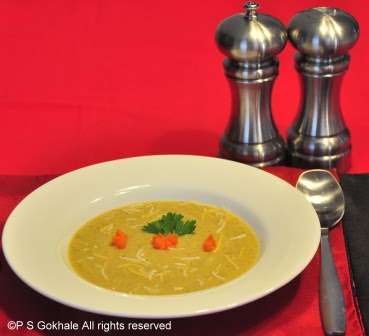So, the other day I was looking at the cabbage in my fridge and wondering what I could do with it. I was tired of making the same old stir fry and wanted to try something different. Suddenly a thought struck. “Why not make coleslaw?!” I really enjoy coleslaws. But, I haven’t really made coleslaw too often because of the large amount of sugar and mayonnaise that is needed to make the dressing. So, this time I thought, maybe if I figured out a way to make a healthier version of the recipe, I would make it more often and eat it without any guilt. The healthier version turned out great and my family really couldn't tell the difference till I pointed it out. This is definitely going to be my go to coleslaw recipe.
Ingredients
1/4 large cabbage shredded
1 carrot shredded
1/4 red onion, finely diced
1/4 cup yogurt
1/4 cup milk
1 tsp vinegar
2 tsp sugar
salt to taste
pepper to taste
Method
Mix together the yogurt, milk, vinegar, sugar, salt and pepper. Using a whisk, mix it well so that all the ingredients are well blended. This is the dressing.
In a bowl, mix together the cabbage, carrot and onion. Add the amount of dressing that you want over the vegetables and toss well. Let the salad chill for at least an hour before serving. It is the perfect side with a sandwhich.
Tips
There should be enough dressing to coat the vegatables but not so much that it drowns the vegetables. If you want, you can add a little mayonnaise to the recipe as well, or if you want to go with the original, substitute the yogurt with mayonnaise.
Ingredients
1/4 large cabbage shredded
1 carrot shredded
1/4 red onion, finely diced
1/4 cup yogurt
1/4 cup milk
1 tsp vinegar
2 tsp sugar
salt to taste
pepper to taste
Method
Mix together the yogurt, milk, vinegar, sugar, salt and pepper. Using a whisk, mix it well so that all the ingredients are well blended. This is the dressing.
In a bowl, mix together the cabbage, carrot and onion. Add the amount of dressing that you want over the vegetables and toss well. Let the salad chill for at least an hour before serving. It is the perfect side with a sandwhich.
Tips
There should be enough dressing to coat the vegatables but not so much that it drowns the vegetables. If you want, you can add a little mayonnaise to the recipe as well, or if you want to go with the original, substitute the yogurt with mayonnaise.






















